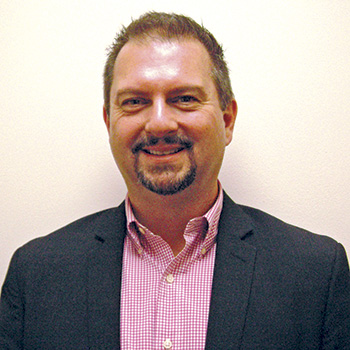 Walter Erndt
Walter ErndtP&S: What is your assessment of the state of aging water infrastructure in the U.S.?
WE: "Our current rating is a D for water and wastewater, and we have literally about 800,000 miles of public sewer mains in the U.S. A big percentage of those were installed after World War II, and they really are approaching the end of their useful life. So that's what it comes down to—really just the investments that are needed now that we're really not seeing to replace or repair all that pipe.
"It's an interesting thing with water and wastewater. People don't really think about it because it's buried under the ground, so out of sight, out of mind. ... Obviously, with what's going on right now with Flint, Michigan, [water is] getting more news than we've seen in the past. But for somebody that's been in the water/wastewater business as long as I've been in it, we've kind of coined a saying: 'From a political standpoint, your wastewater system's not a red fire engine that you can put in the town parade.' So, for the most part it goes unnoticed. It's important, but it goes unnoticed.
"That said, out of necessity, it's estimated that within the next 20 years we'll spend about a half a trillion dollars on our water/wastewater system. ... That's really just for repair and replacement of our aging water/wastewater infrastructure.
"To compound the funding issue, people are actually using less water than they have used, and it's declined over about the past 10 years just because of education from a conservation standpoint. To add to that, you have low-flush toilets now, low-use shower heads, and even the utilities—washers are using less water. ... But that is really compounding the issue ... because we are still on a consumption-based rate structure, and you can see that in your personal life: Your water and sewer bill is based on consumption so as people are using less water, the bill rate structure is not receiving as much funding because it's consumption-based. So the cost at the municipality continues to rise year over year. [In other words,] because we're on a cost-based rate structure and people are using less water, the actual revenue going into the municipality is getting less each year, but the cost of the municipalities continues to rise year over year.
"With all these pipes, Atlanta's losing 30 percent of their water, New York City is losing about 15 percent of their water in their pipes, and nobody's paying for that. That's just lost water and lost revenue."
P&S: What do you think the solution is?
WE: "It really comes down to funding—where are we going to get the funding from? Is that state-revolving funds? Is that federal funds ... ? Obviously, the EPA is involved more so when it comes to wastewater because if wastewater is spilling out, that's an issue to the environment."
P&S: Are there any steps that organizations or companies are taking to address the problem?
WE: Public understanding of the value of water—that really needs to be at the forefront. Most people don't think about this, but there really is no new water. We have a finite amount of water on the earth, and it's all reused. In other words, water is used, it evaporates, it's taken up into the clouds and filtered, and then comes back down in rain, but that's the same water that was used when the dinosaurs walked the earth. There's really no new water; it's all just used and recycled. I think we take it for granted. It's interesting—people will pay $120 a month for cable TV and entertainment, but they really don't want to pay more than $50 a month for water and sewer."
P&S: As the nation begins to deal with this issue of aging infrastructure, how will that affect the pump industry?
WE: "There's always going to be a need for equipment to be repaired or replaced. The bulk of our industry really doesn't deal that much with pipes or pipe relining; most of the focus for us is on pumps and the systems that make that up. There are some really interesting technologies that have evolved over the last 10 years in piping relinement, so I think you're probably going to see that industry growing. You're going to see the type of testing—whether it be smoke testing or other technologies to look for leaks in pipes—that's really going to grow. From a pumping standpoint, once you get rid of all the inefficiencies in your pipes, the very next step you want to look at is the efficiency of your pumping system. If you're losing 30 percent water through your pipes, you could have the most efficient pump in the world, but you're still losing 30 percent of your water through your pipes. So once you correct all the piping issues and the leaks, the obvious next step to look at is the efficiency of your pumping system."
P&S: What is your company doing to address these challenges?
WE: "From the standpoint of force main technology, we continue to speak to that. When we talk about wastewater, you can imagine what happens during rain events, [with] the stormwater coming in. In a traditional gravity system, that's going to create what's known as a combined sewer, and you're going to have combined sewer overflows. That's where a system simply can't handle everything that's coming into it, and you end up with combined sewer overflowing in lift stations and other areas of the system. That really is our focus, and we're more focused on force main technology, whether it be with traditional pumping systems or pressure sewer going into force main. Force mains are closed systems and easy to maintain, and they're a great replacement for an aging gravity sewer system that is causing combined sewer overflows."


